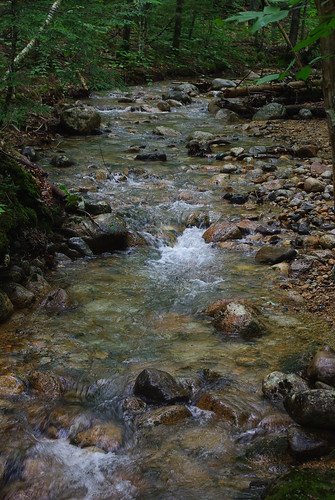Sewer district updates Shaker council on ‘detailed design’ for Doan Brook restoration at Horseshoe
Brook #Brook

SHAKER HEIGHTS, Ohio — While early cost projections have gone up for restoring Doan Brook tributaries through Horseshoe Lake Park, sewer district officials hope to rein those in over the course of the yearlong detailed design phase.
“We now have a much better understanding of the sediment profile” and what will be moved around over much of a new 60-acre parkland site, Northeast Ohio Regional Sewer District (NEORSD) Director of Watershed Programs Frank Greenland told Shaker City Council Monday (Aug. 14).
The cost to the sewer district is now approaching the $20 million mark — up about $5 million from the original estimates when the district agreed to pay over $14 million to remove the 170-year-old dam and reintroduce stream channels over the lake bed, which has been drained in recent years.
“We should have a much more refined cost estimate in a year’s time,” Greenland added.
Greenland noted that the district will pay any additional cost on work within its 28-acre scope or footprint of the project. That has extended further downstream from the proposed confluence toward Lee Road, where it’s “important to realign the stream” through the riparian corridor, he said.
As was the case last week with Cleveland Heights City Council, sewer district officials and their design team want both cities to consider an array of amenities for the parkland they lease in tandem from the City of Cleveland.
These would be at extra cost to the cities, although design and engineering fees would only be about 7 to 10 percent of the estimated project cost, which could run to $4.2 million for primary amenities such as:
• Four floodplain boardwalks ($1 million)
• Circulation features, such as removing foot, bike and other wheeled traffic off of the blind turns on Park Drive, adding a north-south path between Shelburne and Attleboro roads and adding a Beaumont to Lee Road connection ($1.3 million)
• Various primary park amenities, based on 2,100 responses during the community engagement process: a sensory garden with masonry from the old dam’s stilling pool, two hillside seating areas, masonry restoration at the old beach and splash pad dating back to the Depression-era Civil Works Administration (CWA) and pollinator gardens around the old earthen embankment ($1.9 million)
These features would require local funding over and above what the sewer district will cover, such as ongoing maintenance of the floodplains and invasive species removal.
“That will remain our obligation,” Greenland stated in response to a question from Councilman Earl Williams about potential future costs to the cities.
When the sewer district team finishes its work, “it’s going to look like a completed project,” Stimson land architects project manager Matt Langan said of the “additive” amenities beyond the reconnection of North Park and South Park boulevards, including a bridge, as well as an east-west accessible trail running the length of the park.
Calling it a “staggeringly beautiful plan,” Councilwoman Nancy Moore was also impressed that it was done with extensive community input with the goal of remaining environmentally sustainable.
“And as a bonus, there’s recreational use of all this,” Moore added. “It’s not a geopolitical boundary, but rather a shared community space.”
Councilwoman Anne Williams agreed with Moore, but asked what kind of commitment was needed from the cities at this juncture.
Greenland said the design team plans to go to the NEORSD Board of Trustees, possibly at its second meeting in September, but amendments could be made later on any adjustments from the cities, “certainly over the next couple of months.”
Stimson design principal Glen Valentine said that while the primary amenities were “the items that rose to the top in the public process, the secondary amenities (totaling another $3.9 million) enhance the park but don’t necessarily need to happen right away — they are not absolutely critical from a timing standpoint.”
Shaker Heights Mayor David Weiss pointed out that while timing may not be crucial from a construction standpoint, working on designing proposed amenities now could also provide future benefit.
“If we pursue grants, we have a much better shot of getting money with projects that are shovel-ready,” Weiss said.
Rebuttal offered
Sitting in the audience at Monday’s meeting was Cleveland Heights resident and local historian Korbi Roberts, also a member of the Friends of Horseshoe Lake (FOHSL) nonprofit fighting the plan to remove the dam.
“The new park — without all the millions of dollars of amenities that the citizens will have to pay for — will only be a ‘sewer work’ benefitting NEORSD, all at the expense of destroyed and irreplaceable history, the original free-to-all parkland vision and the lake habitat for the near-threatened migratory birds,” Roberts said afterward.
Roberts believes the same amount of money allocated by the NEORSD “for destroying the lake site could be used instead for restoring the valuable lake, therefore fulfilling the safe stormwater management needs, as well as the legal requirement that the cities maintain the lake for the public.”
Other FOHSL members are appealing the dismissal of lawsuits filed against both cities and have a new case pending in Cuyahoga County Common Pleas Court against the sewer district.
As for the amenities, Roberts said, “This is another example of NEORSD’s way of rushing government through the process so they don’t have time to think about the consequences and can’t be stopped.”
After another year of detailed design, construction is now set for 2025.
Read more from the Sun Press.